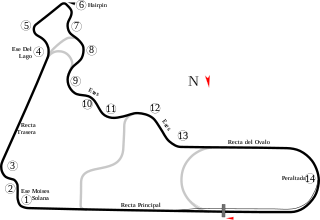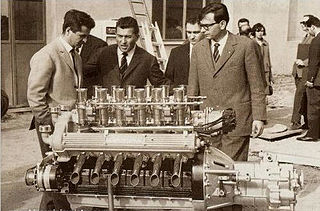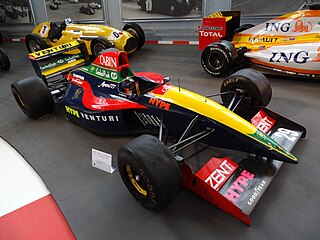This article needs additional citations for verification .(December 2015) (Learn how and when to remove this template message) |
 | |||||||||
| Category | Formula One | ||||||||
|---|---|---|---|---|---|---|---|---|---|
| Constructor | Lola Cars | ||||||||
| Designer(s) | Eric Broadley Chris Murphy | ||||||||
| Predecessor | Lola LC88 | ||||||||
| Successor | Lola LC90 | ||||||||
| Technical specifications [1] [2] | |||||||||
| Chassis | Carbon fibre monocoque | ||||||||
| Suspension (front) | Double wishbones, pushrod, twin spring / dampers | ||||||||
| Suspension (rear) | Double wishbones, pushrod, twin spring / dampers | ||||||||
| Engine | Lamborghini 3512, 3,493 cc (213.2 cu in), 80° V12, NA, Mid-engine, longitudinally mounted | ||||||||
| Transmission | Lola 6-speed manual | ||||||||
| Fuel | BP | ||||||||
| Tyres | Goodyear | ||||||||
| Competition history | |||||||||
| Notable entrants | Larrousse & Calmels ESPO Larrousse F1 | ||||||||
| Notable drivers | 29. 29. 29. 30. 30. | ||||||||
| Debut | 1989 San Marino Grand Prix | ||||||||
| |||||||||
| Constructors' Championships | 0 | ||||||||
| Drivers' Championships | 0 | ||||||||
The Lola LC89 is a Formula One car designed by Lola founder Eric Broadley and used in the 1989 Formula One season by the Larrousse team. It was powered by the 3.5-litre Lamborghini 3512 V12 engine designed by former Ferrari designer Mauro Forghieri. Drivers of the car included Philippe Alliot, Éric Bernard, Aguri Suzuki and Michele Alboreto.
Formula One is the highest class of single-seater auto racing sanctioned by the Fédération Internationale de l'Automobile (FIA) and owned by the Formula One Group. The FIA Formula One World Championship has been one of the premier forms of racing around the world since its inaugural season in 1950. The word "formula" in the name refers to the set of rules to which all participants' cars must conform. A Formula One season consists of a series of races, known as Grands Prix, which take place worldwide on purpose-built circuits and on public roads.
Lola Cars International Ltd. was a racing car engineering company founded in 1958 by Eric Broadley and based in Huntingdon, England. Enduring more than fifty years, it was one of the oldest and largest manufacturers of racing cars in the world. Lola Cars started by building small front-engined sports cars, and branched out into Formula Junior cars before diversifying into a wider range of sporting vehicles. Lola was acquired by Martin Birrane in 1998 after the unsuccessful MasterCard Lola attempt at Formula One.
Eric Harrison Broadley MBE was a British entrepreneur, engineer, and founder and chief designer of Lola Cars, the motor racing manufacturer and engineering company. He was arguably one of the most influential automobile designers of the post-war period, and over the years Lola had a hand in many high-profile projects in Formula One, IndyCar, and sports car racing. Broadley sold Lola to Martin Birrane in 1999.
The car made its debut in round two of the season, at the 1989 San Marino Grand Prix. While the aerodynamics were good and the chassis was on the pace, the Lamborghini V12 engine proved to be generally unreliable, despite its reported 600 bhp (447 kW; 608 PS). The car and engine combination would only score one point in its racing life with Alliot finishing in sixth place at the 1989 Spanish Grand Prix. Five time Grand Prix winner Alboreto failed to pre-qualify the car twice (Spain and Australia) and failed to qualify once (Japan), in his eight drives for the team in 1989. Alboreto also suffered a broken rib driving the car when he ran over a high curb during the Hungarian Grand Prix.

The 1989 San Marino Grand Prix was a Formula One motor race held at the Imola circuit on 23 April 1989. It was the second race of the 1989 Formula One season. The race was overshadowed by Gerhard Berger's massive accident at Tamburello corner. The race was stopped for one hour and restarted. The race won by Ayrton Senna who started from pole position.

The 1989 Spanish Grand Prix was a Formula One motor race held at Jerez on 1 October 1989. The race, contested over 73 laps, was the fourteenth race of the 1989 Formula One season and was won from pole position by Ayrton Senna, driving a McLaren-Honda. Gerhard Berger was second in a Ferrari, while Senna's teammate and Drivers' Championship rival Alain Prost was third.

The 1989 Australian Grand Prix was a Formula One motor race held at Adelaide on 5 November 1989. It took place in wet conditions, and was stopped and restarted following a first-lap collision. Andrea de Cesaris spun at the same corner on two consecutive laps. As Formula One cars are not as fast in wet conditions as they are in the dry, the race was stopped at the two-hour mark with 70 laps being completed, 11 short of the scheduled 81 laps.
The chassis was updated into the LC89B for the first two races of 1990. It was replaced by the Lola LC90 from the 1990 San Marino Grand Prix.

The 1990 FIA Formula One World Championship was the 44th season of FIA Formula One motor racing. It featured the 1990 Formula One World Championship for Drivers and the 1990 Formula One World Championship for Constructors, which were contested concurrently over a sixteen-race series that commenced on 11 March and ended on 4 November. Ayrton Senna won the Drivers' Championship for the second time, and McLaren-Honda won their third consecutive Constructors' Championship.

The Lola LC90 was a Formula One car designed by Eric Broadley and Chris Murphy for use in the 1990 Formula One season by the Larrousse team. It was powered by the 3.5L Lamborghini 3512 V12 engine. The car was driven by Japanese driver Aguri Suzuki who had spent 1989 failing to pre-qualify all 16 races for Zakspeed, and Frenchman Éric Bernard.

The 1990 San Marino Grand Prix was a Formula One motor race held on 13 May 1990 at Imola. It was the third race of the 1990 FIA Formula One World Championship. The race was held over 61 laps of the 5.04-kilometre (3.13 mi) circuit for a race distance of 307.44 kilometres (191.03 mi).

A V12 engine is a V engine with 12 cylinders mounted on the crankcase in two banks of six cylinders each, usually but not always at a 60° angle to each other, with all 12 pistons driving a common crankshaft. Since each cylinder bank is essentially a straight-six which is by itself in both primary and secondary balance, a V12 inherits perfect primary and secondary balance no matter which V angle is used, and therefore it needs no balance shafts. A four-stroke 12 cylinder engine has an even firing order if cylinders fire every 60° of crankshaft rotation, so a V12 with cylinder banks at a multiples of 60° will have even firing intervals without using split crankpins. By using split crankpins or ignoring minor vibrations, any V angle is possible. The 180° configuration is usually referred to as a "flat-twelve engine" or a "boxer" although it is in reality a 180° V since the pistons can and normally do use shared crankpins. It may also be written as "V-12", although this is less common.

Larrousse Formula One was a motorsports racing team founded in 1987 by Didier Calmels and former racer Gérard Larrousse, originally under the name Larrousse & Calmels. It was based in Antony, in the southern suburbs of Paris. It was renamed Larrousse after the departure of Calmels following his murder of his wife. The team competed in Formula One from 1987 to 1994 before succumbing to financial problems, scoring a best finish of third at the 1990 Japanese Grand Prix during this time.












